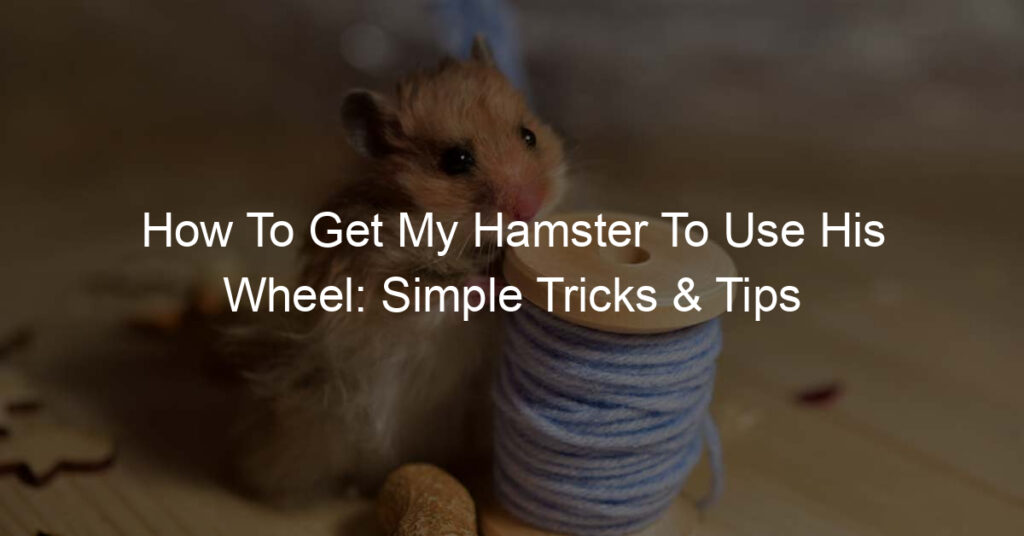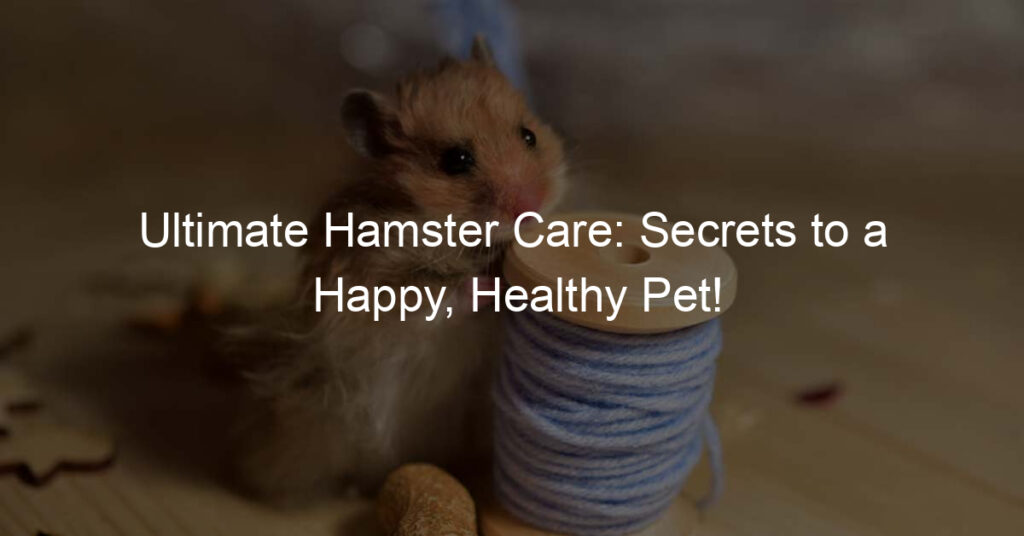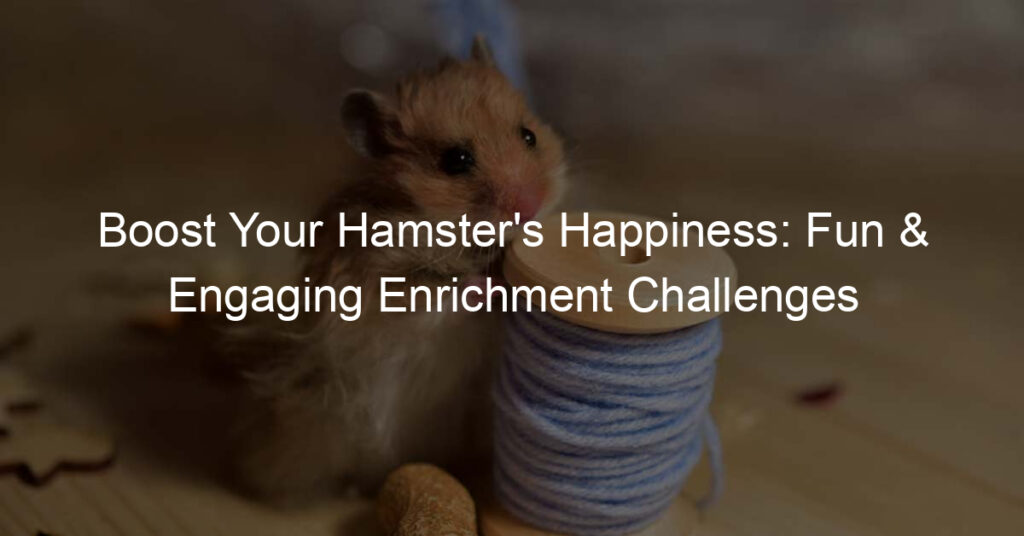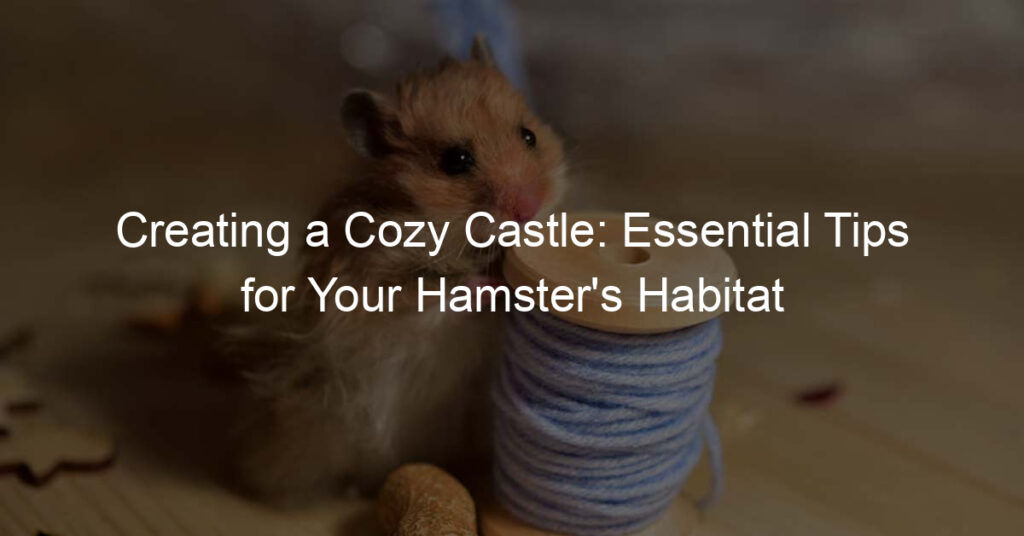Hamsters are popular pets known for their active behavior and love of exercise.
One of the most important activities for a hamster’s well-being is running on their exercise wheel, which allows them to remain fit and healthy. However, you might find that your hamster is not using their wheel, and this could be due to various reasons.
Understanding how to get your hamster to use his wheel and the importance of exercise for their health can help you identify what might be preventing them from using their wheel.
Choosing the right kind of wheel, its optimal placement, and addressing factors such as your hamster’s age and health can make a significant difference in encouraging them to make use of their wheel.
Key Takeaways
- Selecting the appropriate wheel and placing it correctly can motivate your hamster to use it.
- Consider age and health factors that may influence your hamster’s wheel usage.
- Proper nutrition contributes to your hamster’s energy levels, encouraging wheel use.
Understanding Your Hamster’s Nature
Nocturnal Habits
Hamsters are naturally nocturnal animals, which means they are more active during night-time hours. This is an important aspect to consider when trying to get your hamster to use its wheel.
Since they sleep during the day, it’s common for them to be less active and not use the wheel during daylight hours. Hamster breeds can vary, but their nocturnal nature remains consistent across the majority of breeds.
Personal Preference and Personality
Just like humans, hamsters have their own unique preferences and personalities. While some hamsters might love using the wheel and are very active, others might be more inclined to explore other parts of their cage or simply prefer a slower pace of life.
It’s essential to observe your hamster’s behavior and adapt to their preferences to ensure they remain happy, healthy, and stress-free.
Hamsters in Captivity Vs Wild
It’s also important to understand the differences between hamsters in captivity and those in the wild. In the wild, hamsters have an abundance of space to roam, explore, and burn off energy.
Nevertheless, in captivity, their living space is more limited, making exercise wheels a crucial component of their physical and mental well-being.
Providing a properly sized and safe exercise wheel can encourage your captive hamster to engage in more natural and active behaviors similar to their wild counterparts.
Importance of Exercise to Your Hamster
Health and Obesity
Exercise plays a crucial role in maintaining your hamster’s overall health and preventing obesity. Providing opportunities for physical activities like running on a wheel can help manage your hamster’s weight.
An appropriate wheel for Syrian hamsters should have a diameter of about 8 to 12 inches, while dwarf hamsters require a smaller one.
Weight management is essential for hamsters, as obesity can lead to various health issues. Encouraging your hamster to stay active is vital not only for their physical health but also for their mental well-being.
Mental Stimulation and Boredom
Hamsters need mental stimulation to prevent boredom, which can lead to unhealthy behaviors. Running on a wheel allows your furry friend to engage in exploration and play, both of which are essential for mental stimulation.
In addition to wheels, introducing climbing toys and a secure space for supervised free-roaming can also provide the mental engagement and physical activity your hamster needs.
Boredom in hamsters is best prevented by ensuring they have a variety of ways to stay active and engaged in their environment.
Hormonal Balance
Exercise is necessary for maintaining proper hormone release and adrenal activity in hamsters. Running on a wheel helps your hamster maintain hormonal balance, contributing to their overall happiness and well-being.
Encouraging your hamster to use its wheel regularly supports its physical health and mental and emotional wellness by stimulating hormone release and adrenal activity. This ultimately helps keep your hamster happy, healthy, and content in its environment.
Choosing the Right Wheel
Size Considerations
When selecting a hamster wheel, one of the most important factors to consider is the size of the wheel in relation to your hamster. Smaller hamsters, such as dwarf hamsters (winter white, roborovski, and Campbell’s hamsters), can utilize a 6.5-inch (16.5 cm) wheel.
For larger hamsters, like the Turkish or Syrian hamsters, a 10-inch hamster wheel or larger is recommended to accommodate their size.
Material and Design
There are different materials and designs available for hamster wheels.
Here are some common types:
- Plastic wheels: These wheels are lightweight and easy to clean. However, they can be noisy, and your hamster might chew on them.
- Metal wheels: These are durable and less likely to be chewed by your hamster. Make sure to avoid metal wheels with wire mesh bottoms, as they can be harmful to your hamster’s feet.
- Flying saucer wheels: This unique design is safe for hamsters and comes in various sizes. However, the right size may prove challenging as only the larger sizes are suitable for all species.
Always ensure the design of the hamster wheel is safe and comfortable for your pet. Avoid wire wheels that could potentially cause injury to their feet and legs.
Also, consider the cage size before purchasing a wheel, as some designs may not fit comfortably in smaller living spaces.
Noise Level
One common concern when choosing a hamster running wheel is the noise it may produce. Some wheels, particularly plastic wheels, can be noisy when your hamster is running on them.
To minimize disturbance, you may want to opt for a wheel with a smoother and quieter operation. Taking the time to research wheel designs and read consumer reviews may help you find a wheel that is both safe for your hamster and less disruptive to your home environment.
Optimal Placement of the Wheel
Location Within the Cage
When setting up your hamster’s wheel in the cage, it’s important to choose an appropriate location. Ensure it is easily accessible for your hamster but not too close to other items that could interfere with their ability to run.
Ideally, place the wheel on one side of the cage, ensuring it’s at a distance from the food dish, water bottle, and sleeping area. This separation will ensure your furry friend has enough space to comfortably and safely utilize the wheel.
Avoiding Injury or Illness
To prevent any injuries or illness, make sure to choose a wheel with a solid surface instead of one with metal bars or mesh. Wheels with bars or mesh can cause injury to the hamster’s tiny feet and legs.
Further, check that the wheel moves smoothly and is both stable and secure within the cage. It should not wobble, as this could pose a risk of injury. Regularly inspect the wheel for any signs of wear, tear, or damage, ensuring prompt replacement if necessary. This can help maintain the wheel’s safety and functionality for your hamster.
Escape Prevention
While using a wheel is essential for maintaining your hamster’s physical and mental health, it’s crucial to avoid any risk of escape. Make sure the wheel has a closed back or is mounted securely, as this can protect your hamster from slipping out or getting stuck.
To further prevent your hamster from escaping the cage, ensure it closes securely and there are no gaps or open doors. Keep an eye on your hamster during their exercise sessions to ensure they remain safe and engaged with the wheel.
Addressing Hamster Age and Health Factors
Older Hamsters and Activity
As hamsters age, they may become less active and may exhibit a decreased interest in their wheel. It is normal for older hamsters, especially those close to their second birthday, to slow down a bit due to the aging process.
Keep in mind that hamsters typically live for 2-4 years, with Roborovski hamsters living the longest. If your hamster is less active, ensure they have a comfortable and accessible environment and be patient with them as they continue to age.
Impact of Illness or Injury
Hamsters can also be less active if they are experiencing pain from an injury or if they are ill. Pay close attention to any signs of pain or discomfort, such as limping or vocalizations, and seek veterinary care if you think your hamster might be injured.
In the case of illness, symptoms like dehydration, exhaustion, or a high temperature (normal range is 98°F to 101°F or 36.7°C to 38.3°C) can indicate a need for medical attention.
A trustworthy veterinarian will help you determine the best course of action to address any illness or injury.
Health Conditions Like Wet Tail
Certain health conditions, like wet tail, can be particularly concerning for hamsters. Wet tail is a bacterial infection that causes severe diarrhea, dehydration, and lethargy. Hamsters with wet tail may not show interest in their wheel and may require immediate veterinary intervention to prevent the condition from worsening.
If you notice any signs of wet tail, or if your hamster is exhibiting unusual symptoms, consult your veterinarian as soon as possible.
When working with your hamster to encourage wheel use, remember that their age and health can play a significant role in their level of activity. Always prioritize your hamster’s well-being and consult your veterinarian for advice on keeping your furry friend healthy and happy.
Influence of Nutrition on Wheel Usage
Balanced Diet and Activity
A balanced diet plays an essential role in promoting an active lifestyle for your hamster. Providing your hamster with the necessary nutrients will ensure they have the energy to engage in activities, including using their wheel for exercise.
A well-rounded diet for your hamster consists of a mix of pellets, seeds, fresh vegetables, and occasional treats like mealworms. This variety will help maintain their optimal health and encourage consistent wheel usage.
Avoiding Poor Nutrition
Poor nutrition can lead to several issues in your hamster’s overall well-being and can hinder their ability to use the wheel. Insufficient nutrition or an imbalanced diet can result in low energy levels, making your hamster less active and less interested in using the wheel.
It’s crucial to monitor your hamster’s food intake, ensuring they receive sufficient nutrients to support optimal health and energy levels.
To avoid poor nutrition in your hamster, take note of the following:
- Pellets: Choose hamster pellets that contain a well-balanced blend of essential nutrients, vitamins, and minerals.
- Seeds: Offer a mix of seeds appropriate for your hamster species as part of their diet, but avoid providing too many high-fat seeds that can lead to weight gain.
- Fresh vegetables: Incorporate a variety of fresh vegetables and leafy greens to provide essential nutrients and added variety to your hamster’s diet.
- Treats: Offer occasional treats such as mealworms and insects, but do not overdo it, as excessive treats can lead to obesity.
Types of Hamster Food
There are several types of hamster food available on the market, each with its unique benefits.
For your hamster’s diet, consider providing the following:
- Hamster pellets: Serve as the foundation for your hamster’s balanced diet. They provide essential nutrients, helping maintain appropriate energy levels for wheel usage.
- Seeds: A healthy hamster diet includes a mix of seeds, but be selective and avoid overly fatty seeds as they can cause obesity.
- Fresh vegetables and leafy greens: Fresh produce offers additional nutrients, aids in digestion, and adds variety to your hamster’s diet. Keep portions small and remove any uneaten food daily.
- Mealworms and insects: Ideal for occasional treats, these items can be a good source of protein, but don’t overdo it to prevent obesity and nutritional imbalances.
By providing your hamster with a well-balanced diet, you can promote better health and ensure that they have the energy to engage in activities such as using their wheel.
Monitoring their food intake and ensuring a consistent amount of nutrients is key to encouraging a healthy, active hamster.
Frequently Asked Questions
Why isn’t my hamster using its wheel?
There are various reasons why a hamster may not use their wheel. Some factors include stress, injuries, the wheel being too small or uncomfortable, and the hamster being older or having a naturally lazy personality. Determining the reason may require a trial-and-error approach.
How can I encourage my hamster to exercise?
To encourage your hamster to exercise, make sure their wheel is appropriate in size and comfortable for their specific species. You may also want to try placing some treats near the wheel or creating a habituation period where they become familiar with the wheel.
Establishing a consistent routine and maintaining a clean, stress-free environment will also help encourage exercise.
What alternatives to a wheel can I provide for my hamster?
Besides a wheel, you can provide a variety of toys and accessories to help your hamster exercise and stay active. Examples include exercise balls, climbing structures, tunnels, and mazes. Remember to rotate toys and accessories regularly to keep your hamster engaged and entertained.
Are certain hamster breeds more likely to use a wheel?
Hamster breeds may have different activity levels and propensities for using a wheel. Syrian hamsters and dwarf hamsters, such as Roborovskis and Campbells, are typically more active and likely to use a wheel.
Yet, individual personality and behavior may vary, so it’s essential to observe your individual hamster and cater to its specific needs.
How to choose the right wheel for my hamster?
When choosing a wheel for your hamster, consider its size, comfort, safety, and noise level. The wheel should be large enough for your hamster to run without arching its back or its feet falling through the wheel gaps.
Choose a wheel with a solid running surface to prevent injuries. Additionally, opt for quieter wheels to minimize nocturnal disturbances.
How much time should a hamster spend on a wheel?
Hamsters may spend varying amounts of time on their wheels depending on their breed, age, and individual differences. In general, they can run several miles a day, and it’s essential for their well-being to have access to a wheel for daily exercise.
Regardless, ensure that the wheel doesn’t become their only form of entertainment, as it’s crucial to provide a variety of stimulation and activities for your hamster’s overall well-being.








